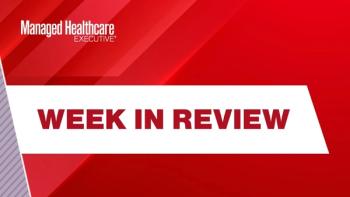
Three factors driving health-spending growth
Healthcare spending growth faster than recent trends.
Health spending is projected to grow at an average rate of 5.8% per year-4.9% on a per capita basis-for 2014 to 2024, according to new estimates from the Office of the Actuary at the Centers for Medicare and Medicaid Services (CMS).
Health spending is projected to grow 1.1% faster than Gross Domestic Product (GDP) per year over this period; as a result, the health share of GDP is expected to rise from 17.4% in 2013 to 19.6% by 2024.
Sean Keehan
These
Keehan offers the following 3 factors that primarily drive health-spending growth over the entire projection period:
#1. Affordable Care Act’s (ACA’s) major coverage expansions.
#2. Stronger expected economic growth.
#3. Population aging.
“Although projected health-spending growth is faster than in the recent past due to the combined effects . . . it is still slower than the growth experienced over the last three decades prior to this most recent recession,” Keehan, tells Managed Healthcare Executive.
Over the entire projection period, the ACA’s major coverage expansions are projected to reduce the uninsured population by 18 million and people tend to use many more healthcare goods and services when they move from insured to uninsured, according to Keehan.
Read:
“Based on analysis of 50 years of
Finally, during the projection period, population aging is projected to increase health-spending growth because people tend to need to use more healthcare goods and services as they get older, according to Keehan.
After six years of growth averaging 4%, national health spending is projected to have grown 5.5% in 2014 as a result of faster health spending due mainly to ACA health insurance coverage expansions and rapid growth in prescription drug spending.
“Factors moderating health-spending growth in 2014 include the effects of continued increases in cost sharing requirements in private health insurance plans and near historically low rates of medical inflation,” Keehan says.
After 2014, national health spending is projected to grow 5.3% in 2015 and peak at 6.3% in 2020.
Read:
“Over this time, medical inflation rates are anticipated to return to levels closer to the decade prior to the recession,” he says. “
Tracey Walker is content manager for FormularyWatch.
Newsletter
Get the latest industry news, event updates, and more from Managed healthcare Executive.

















































